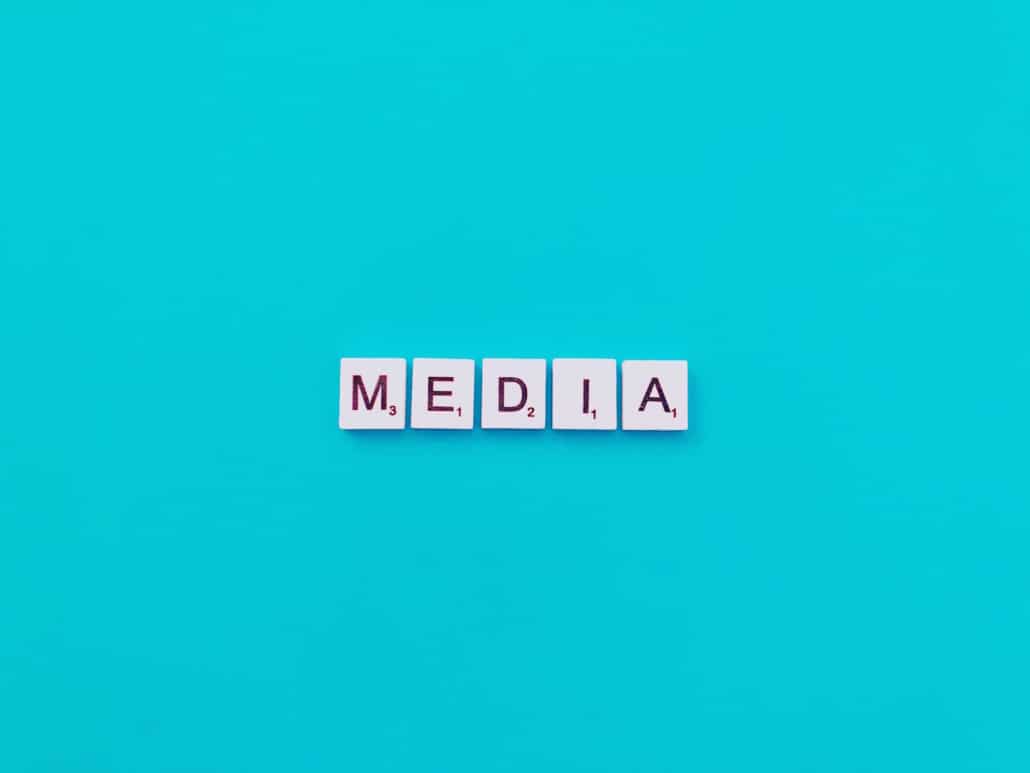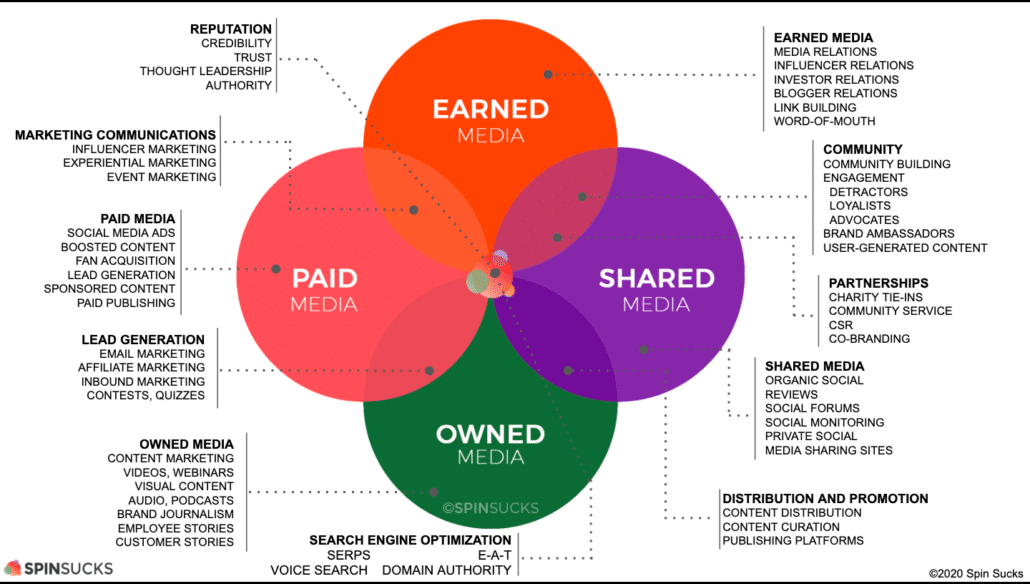The Digital Communication Plan for Tourism – Part VIII: Channels

Media By wanaktek
The destination or operator can choose whether and what to communicate directly (e.g., through their own website and blog) and what to communicate using other media (e.g., professional bloggers, online magazines, customers, residents, etc.).
In the digital world, there are numerous channels for communication. A classification, called the PESO™ model (Fig. 4), introduced by Gini Dietrich of Spinsucks [Spinsucks, 2020], helps us identify four types of online media:
- (P) Paid Media
- (E) Earned Media
- (S) Shared Media
- (O) Owned Media

Fig. 4 PESO™ Model – ©Gini Dietrich, spinsucks.com [Spinsucks, 2020]
- Owned Media refers to media owned by a destination or a tourism operator, such as the website, blog, and social media channels through which the destination or operators communicate. They are “owned” as the control over the content lies entirely in the hands of the communicators (destination/operators). This is true for websites and blogs hosted on owned domains, while it partially applies to social media platforms where communicators must adhere to their rules and evolutions over time, although in general, destinations and operators have significant control over the published content.
- Paid Media includes paid advertising channels. The internet provides various forms of advertising, such as sponsored posts on Instagram or Facebook, paid search engine ads, banners, and videos on third-party websites, and more. Therefore, in the case of social media, they become paid media when used for sponsored posts.
- Shared Media refers to media shared by others (typically tourists, but also operators, etc.) where they share our content. This aspect is crucial for generating digital word-of-mouth and referrals (recommendations to family and friends)
- Earned Media refers to earned media coverage, such as influential media outlets (online publications, influencers, etc.) that feature our content or mention our communication messages (proposals, themes, experiences, products, unique features, etc.). The difference between Shared Media and Earned Media lies in the level of influence of the media: typically, Shared Media consists of individuals who communicate within their circles of friends and acquaintances, while Earned Media includes professional or semi-professional communicators who reach their reference communities, with a more pronounced amplification effect.
Click here for Part I ; Click here for Part II ; Click here for part III; Click here for Part IV
Click here for Part V ; Click here for Part VI ; Click here for Part VII
Sources:
- Rossi A. (2022) Comunicazione Digitale per il Turismo, Amazon KDP, 2022
- [spinsucks.com, 2020] spinsucks.com, (n.a.) “The PESO Model” 2020 https://spinsucks.com/the-peso-model/ retrieved 20.06.2023
#Channels; #DigitalCommunication; #OwnedMedia; #PaidMedia; #EarnedMedia; #SharedMedia; #OnlineMarketing; #InfluencerMarketing; #ContentStrategy; #TourismCommunication

Leave a Reply
Want to join the discussion?Feel free to contribute!